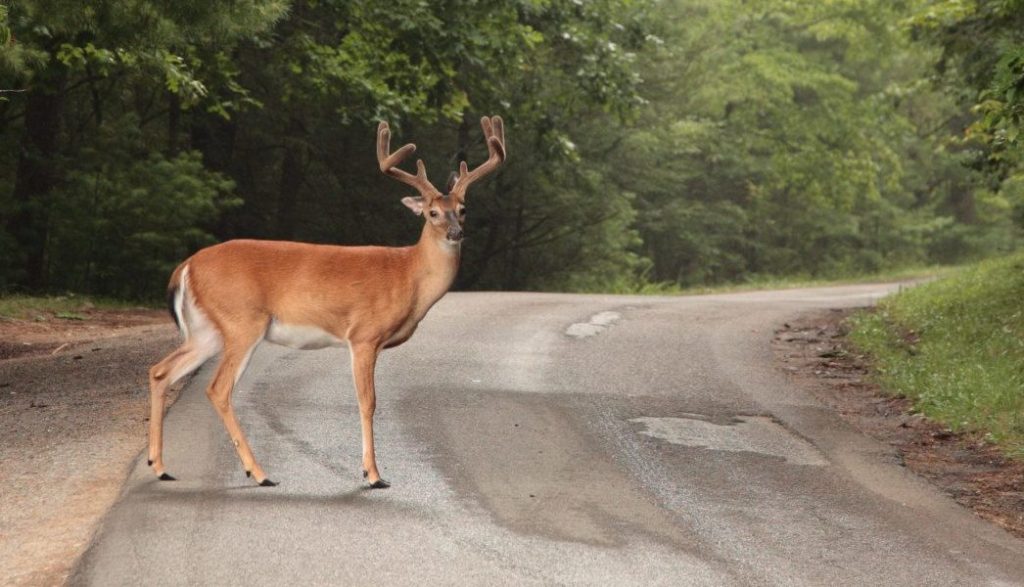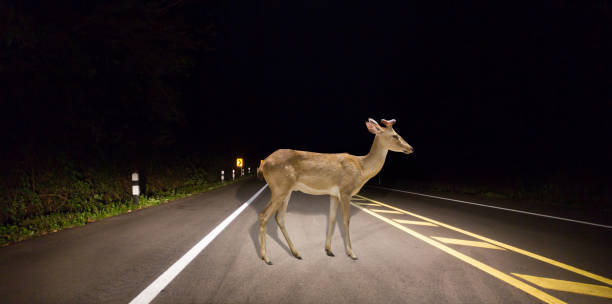Rural areas of the country, especially West Virginia, are known for some of the highest deer-vehicle collisions. As the deer populations grow and urban sprawl continues to encroach upon rural communities, there is an increase in deer-car collisions. Here’s how to prevent deer-vehicle collisions. Deer-vehicle collisions are dangerous and costly, but they can be avoided.
“Deer are crepuscular. Their activity peaks within an hour or so on either side of sunrise and sunset, so their vision is optimized for very low light.” -David Yancy, Deer Biologist at Kentucky Department of Fish and Wildlife Resources.
The top States for Animal Collisions
State Farm Insurance Data: 2021
- West Virginia: 1 in 37
- Montana: 1 in 39
- South Dakota: 1 in 48
- Pennsylvania: 1 in 54
- Michigan: 1 in 54
- Wisconsin: 1 in 56
- Mississippi: 1 in 57
- Minnesota: 1 in 58
- Wyoming: 1 in 58
- Iowa: 1 in 59
Take extra precautions during inclement weather when roads may be slick or icy. November is the worst month for deer-car collisions, followed by October and December. The peak times of day for deer-vehicle collisions are usually between 5 AM – 8 AM and 5 PM – 8 PM.
Why are deer on the roads?
According to Speedir, deer that are not accustomed to the sounds of cars may be spooked by the noise. Deer run without thinking when scared and can unknowingly run in the direction of the sound instead of away from it. Once they get to a road, they become even more scared and often panic, which can cause them to freeze or even run toward a vehicle.
Deer whistles have not been proven to be effective in reducing collisions, so it’s important to take extra steps to reduce the risk of a collision. Here are the best ways to avoid accidents with deer on the road.
“When a headlight beam strikes eyes that are fully dilated to capture as much light as possible, deer cannot see at all, and they freeze until the eyes can adjust. They don’t know what to do, so they do nothing”
David Yancy, Deer Biologist, Kentucky Department of Fish and Wildlife Resources.

How to Prevent Deer-Vehicle Collisions
Deer cause thousands of accidents each year, but most collisions can be avoided if drivers are aware. When driving in a rural area, keep these tips in mind:
- Drive with your lights on during dawn and dusk hours
- Always wear your seat belt
- Drive with High beams at night unless there are oncoming vehicles
- Scan the right and left sides of the road.
- Drive slower than usual to allow yourself a quicker response time to stop
- Slow down the moment you see any deer near the road. There is typically more than one present.
- Look for deer crossing caution road signs
- Honk your horn when you see a deer
- If a deer is in the road, and a collision can’t be prevented, brake and continue braking until the last second before impact. Try not to swerve. At the last moment, remove your foot from the brakes. This will allow the front end of the car to rise upon impact, which means the deer is more likely to pass under the car rather than landing on the front and hitting the windshield
- Avoid driving while tired, or distracted. Never text or make phone calls while driving
If you do have an accident with a deer on the road, move your car safely off the road, turn on your hazard lights, safety check your passengers, and call 911 immediately. Do not go near the deer or attempt to move it. Injured animals can be dangerous.
If you have a dead deer on your road or property that needs to be removed, call our wildlife removal specialists today.
*Source(s): State Farm Insurance

